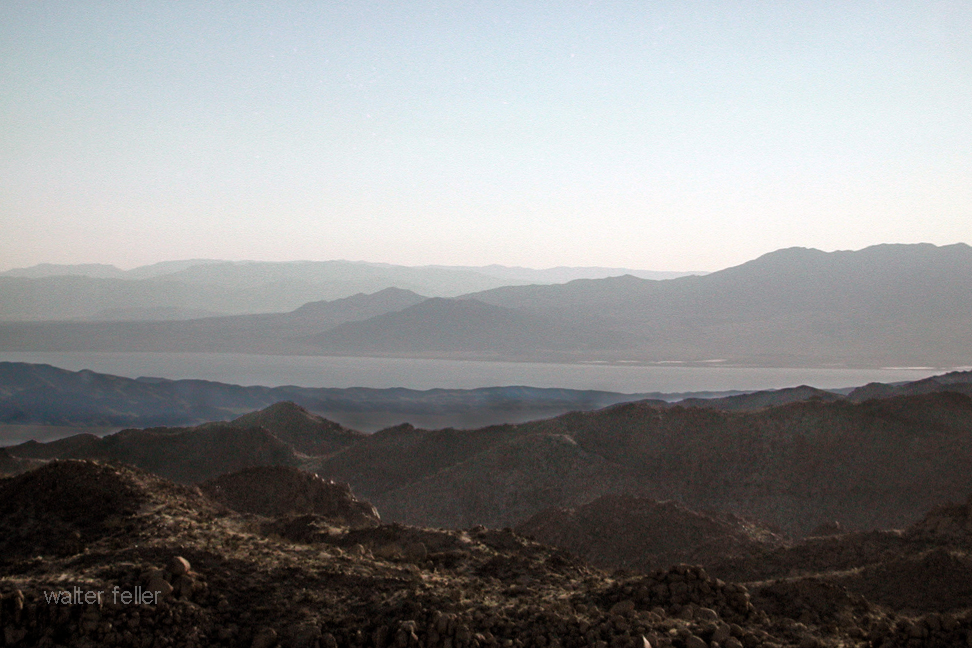Ancient Lake Cahuilla, or Lake LeConte, was a prehistoric lake in California and northern Mexico. This lake was significantly larger than the current Salton Sea in the same region. It existed in the Salton Basin, a low-lying area of the Colorado Desert.

The formation of Lake Cahuilla was due to the Colorado River changing its course at various times in history. The river flowed into the Salton Basin, creating a large freshwater lake. The size and existence of the lake fluctuated over centuries, depending on the river’s course and the climate.
Lake Cahuilla was significant in several ways:
- Ecological Impact: As a large freshwater lake, it supported a diverse ecosystem and was an important habitat for various species.
- Human History: The lake significantly influenced the indigenous peoples of the region. Tribes such as the Cahuilla, Quechan, Mohave, and others lived around its shores and relied on its resources for survival. The lake’s presence and subsequent disappearance influenced their cultural narratives and settlement patterns.
- Geological Interest: The rise and fall of Lake Cahuilla have been of interest to geologists and other scientists in understanding the region’s geological history and the behavior of the Colorado River.
- Archaeological Significance: The areas that were once under the lake have been rich in archaeological findings, providing insights into the life of the indigenous peoples who lived there.
- Influence on Modern Issues: The history of Lake Cahuilla has been studied in the context of understanding modern issues related to the Salton Sea, such as environmental and water management challenges.
The remnants of Lake Cahuilla, like beach ridges and other geological features, are still visible in the landscape, providing a glimpse into this prehistoric body of water’s vastness and significance.
Timeline for Lake Cahuilla
The timeline of Lake Cahuilla’s existence spans several thousand years, with filling and drying periods corresponding to changes in the course of the Colorado River and regional climate conditions. Here’s a general overview of its timeline:
- Early Formation (Prehistoric Times): The formation of Lake Cahuilla dates back to prehistoric times. It is believed to have formed and disappeared multiple times over several thousand years. The exact dates of these cycles are subject to ongoing research and interpretation.
- Evidence of Multiple Cycles (Several Thousand Years Ago): Geological and archaeological evidence suggests that Lake Cahuilla filled and dried up multiple times. These cycles were driven by the Colorado River’s changing course, alternating between flowing into the Gulf of California and the Salton Basin.
- Last High Stand (About 1300-1600 AD): One of Lake Cahuilla’s most recent and well-documented high stands occurred between 1300 and 1600 AD. This period is particularly interesting to archaeologists and historians as it coincides with the flourishing of indigenous cultures in the region.
- Final Drying (Around 1600 AD): The lake is believed to have dried up completely around 1600 AD, following the Colorado River reverting its course away from the Salton Basin and back towards the Gulf of California. The desert environment of the Salton Sea area as we know it today began to take shape after this event.
- Modern Times (20th Century Onwards): The current Salton Sea was created in the early 20th century due to accidental flooding from the Colorado River in part of ancient Lake Cahuilla’s basin. This event is unrelated to the natural cycles that created and dried up Lake Cahuilla but occurs in the same geographic region.
The timeline of Lake Cahuilla is a subject of ongoing scientific study, with new research continually refining our understanding of its history and the factors that influenced its formation and disappearance.